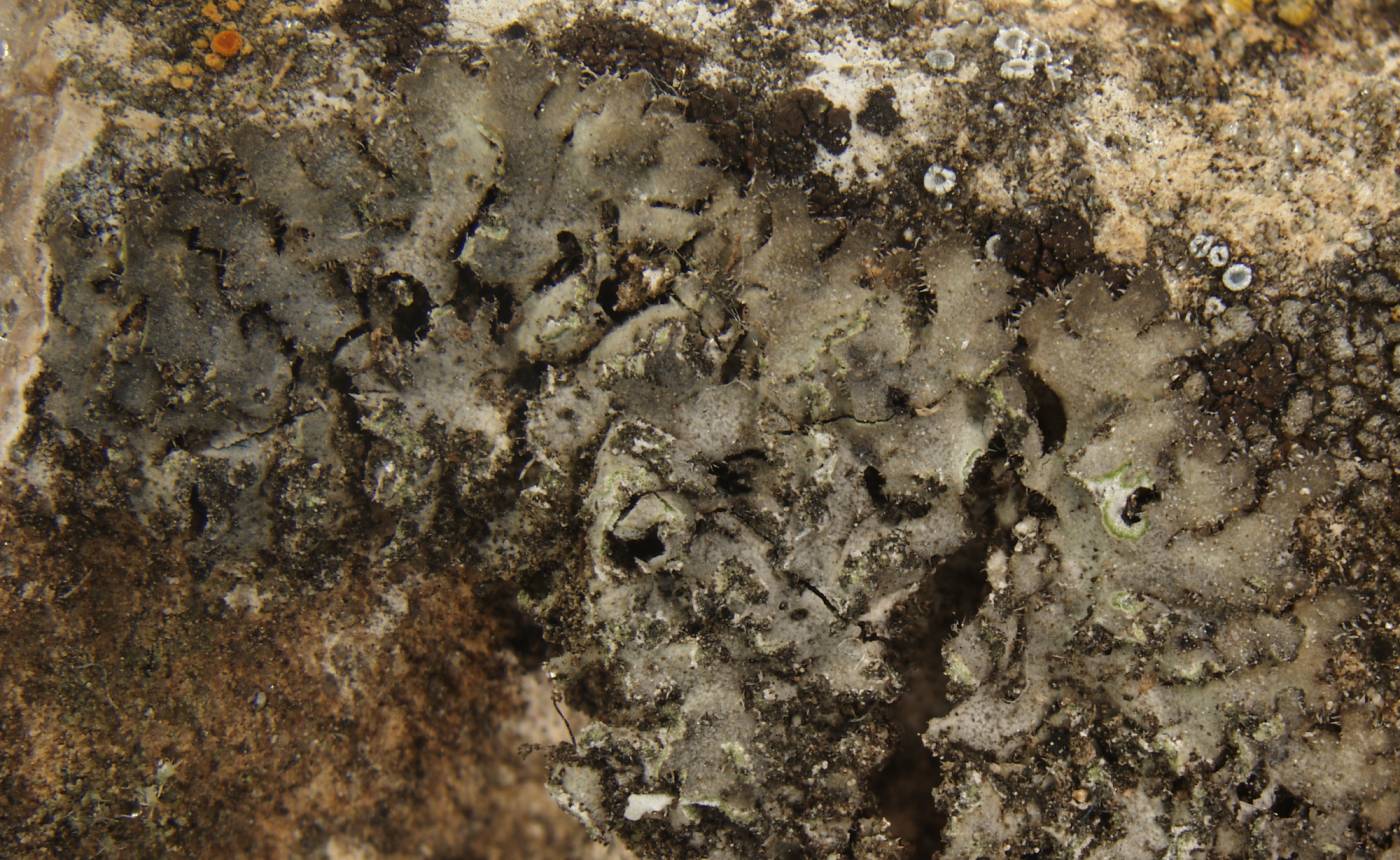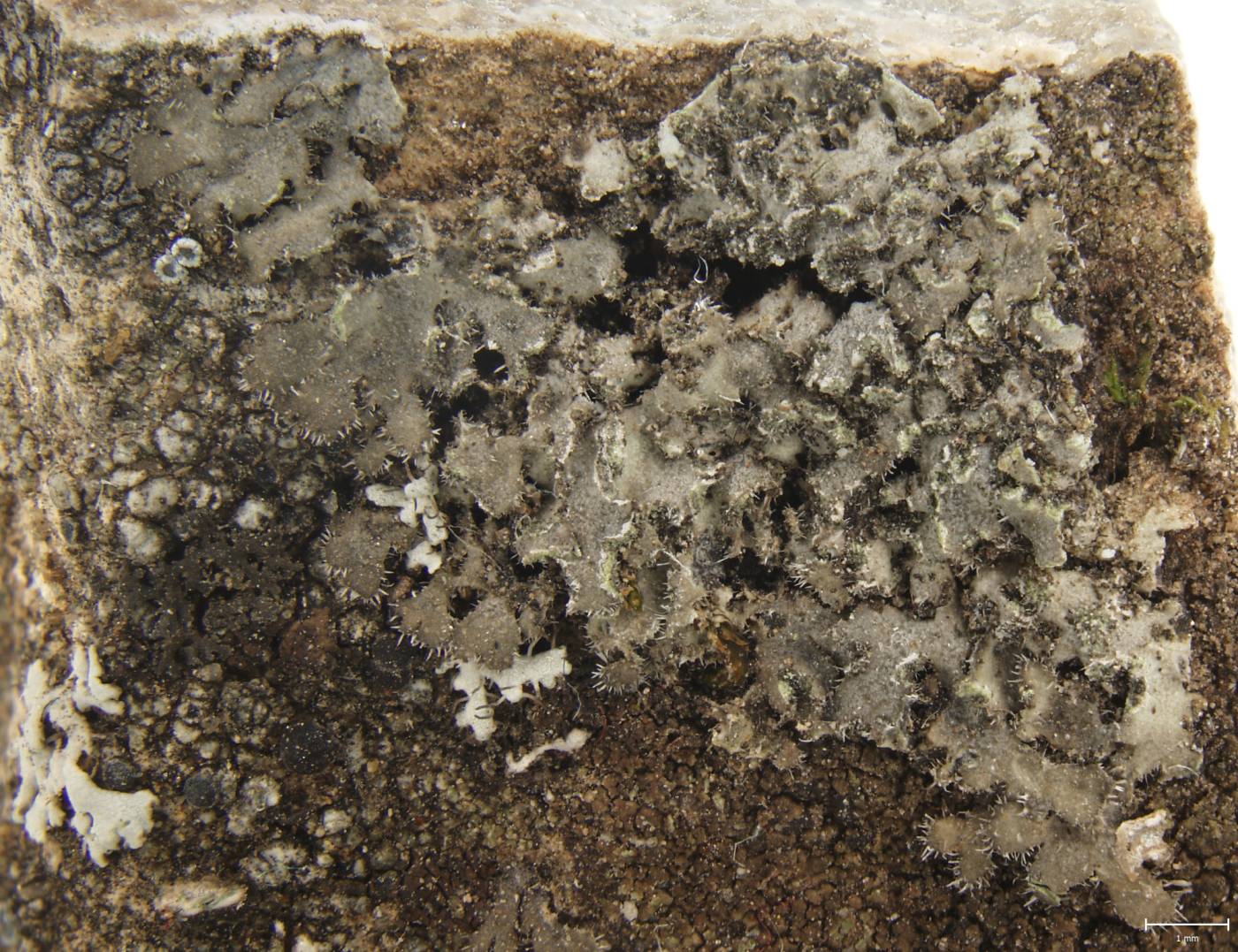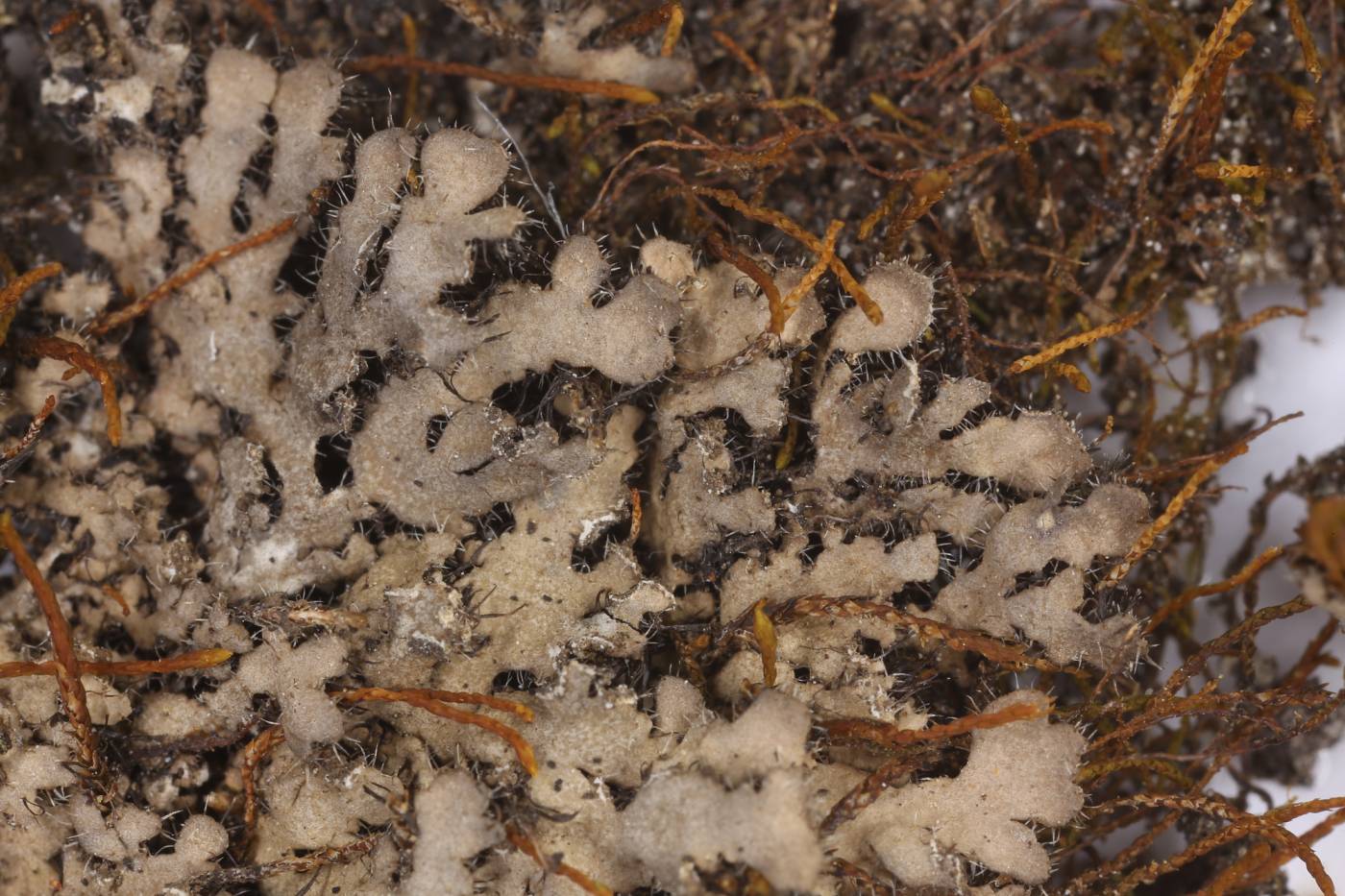Similar to the common P. orbicularis, distinguished mainly by hyaline hairs densely covering lobe ends. It occurs on a variety of substrates but is still quite rare. It grows on bark of deciduous trees and also on calcareous rocks in xerothermic areas. The species prefers shaded microhabitats where it often occurs in association with mosses. It is widely distributed in Europe, more common mainly in the Mediterranean. In the Czech Republic, it is quite rare. Recent records are from southern Moravia and central Bohemia, predominantly from rock substrates.
P. cernohorskyi, described by the Czech lichenologist J. Nádvorník, is regarded as a synonym of this species. Material collected by Z. Černohorský at the Velká hora hill near Karlštejn (Bohemian Karst) was selected as a lectotype. It is still distinguished by some authors based on minute differences in soralia. However, the variability is great and the character does not seem reliable.
Literature: Svoboda D. (2007): Phaeophyscia hirsuta – a little known lichen in the Czech Republic. – Graphis Scripta 19: 33–36. Nádvorník J. (1947): Physciaceae Tchécoslovaques. – Studia Botanica Čechoslovaca 8: 69–124.
taxonomic classification:Ascomycota → Lecanoromycetes → Caliciales → Physciaceae → Phaeophyscia
most frequented synonyms:Phaeophyscia cernohorskyiRed List (Liška & Palice 2010):CR – critically endangered
Red List (Malíček 2023):C2 – strongly endangered
Occurrence in the Czech Republic
All records: 23, confirmed 23. One click on a selected square displays particular record(s), including their source(s).


